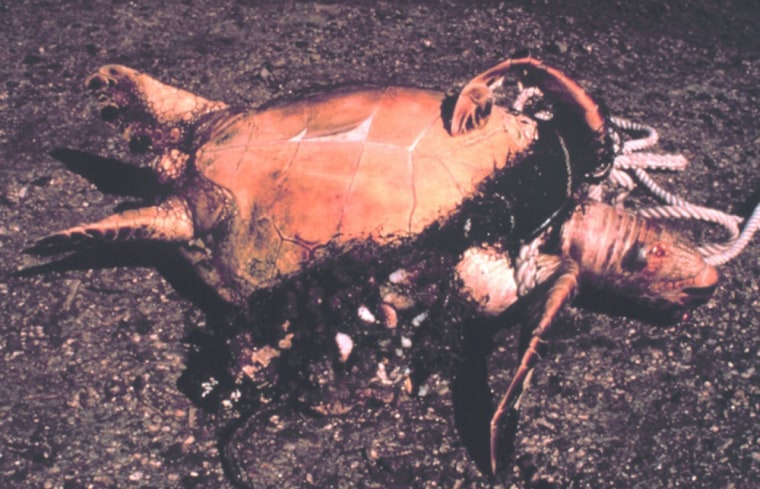Federal fish managers are proposing to relax rules designed to protect endangered leatherback sea turtles and allow some fishing off the West Coast under strict government supervision.
The changes, which must obtain final approval from the National Marine Fisheries Service, would open up drift gillnet fishing off the California and Oregon coasts from south of Monterey, Calif., to just north of Newport, Ore.
Drift gillnet boats use 900-foot nets that float about 10 yards below the surface to catch swordfish by the gills. Leatherback sea turtles can become entangled in those nets and die.
The ancient creatures are the largest sea turtles and typically weigh from 500 to 1,500 pounds.
Since 2001, drift gillnet fishing has been banned from August to November in a wide area off the West Coast.
Fishermen from a drift gillnet fleet petitioned the Pacific Fishery Management Council to consider allowing some fishing in the region during the late summer and fall. The council is meeting this week in Seattle.
Longline fishing possible
In addition to proposing the drift gillnet changes, the council voted to explore the use of longline fishing in the future, a different method of swordfishing that also can harm turtles.
The market for swordfish in the United States is strong, fishermen said. Without a loosening of the restrictions, imports will dominate the market leaving the species at greater risk because of the lack of regulations and higher turtle-population density in other countries, fisherman Pete Dupuy said.
Under the proposed changes, all fishing would be done under the eyes of government observers, who would track the number of turtles caught. The fishery would be closed if two turtles were caught.
According to research reports, the nets could also snare other protected mammals. Under the proposal, if one sperm, grey, short-finned pilot, fin, humpback or minke whale were killed or seriously injured, the swordfish fishery would be closed.
The number of sets — the number of times a fishing vessel can put out its nets — was set at 300.
Activists see ‘huge threat’
Council scientist Kit Dahl said scientists can’t be certain what opening the fishery will mean for the turtles. But environmental groups were outraged by the move.
“We think it’s inappropriate to roll back protections that have been effective at minimizing and eliminating sea-turtle take,” said Meagan Jeans of the Ocean Conservancy. “The proposed expansion of the drift gillnet fishery ... poses a huge threat to endangered sea turtles and other protected species.”
Longline swordfishing was banned off the West Coast in 2004 because the lines, which can extend for 60 miles and drag thousands of husbands, were also catching turtles.
A complete analysis of longline fishing will be prepared for future council review.
A final decision on the proposed drift gillnet changes is expected by August.
